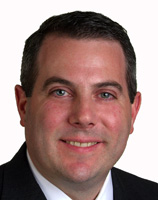Choosing Between Patent And Trade Secret Protection In A Biosimilar World

By Paul A. Calvo, Ph.D.
With estimates that approximately $65 billion worth of biologics will be coming off patent by 2020, the choice of trade secrets versus patent protection has taken on renewed importance in the biotechnology sector. From an originator perspective, increasing importance is being placed on secondary patent protection, i.e. patents that cover manufacturing processes, formulations, etc. The goal of these filings is to extend protection of the original composition and method of use patents by covering production methods or the commercial formulation. However, there is also the sense that many originator companies may bypass filing for patent protection, and the disclosure of their bioprocess that comes with it, in favor of keeping some of their critical processes secret.
It is well established that for biologics, the product's characteristics are closely tied to the manner in which it is produced. Hence the adage, "The product is the process." Therefore, more so than small molecules, biosimilar manufacturers rely much more on production processes as a critical feature to produce a reference biologic. Since patents on processes require disclosure of enough information to make and use the invention that would make "copying" the process or designing around its patent claims more easily accomplished, there may be a desire to keep as much information as secret as possible in order to protect the originator compound.
From the biosimilar applicant’s side, the disclosure requirement was recently clarified when it was held that biosimilar applicants do not have to participate in the patent exchange process outlined in the BPCIA, meaning the process is merely optional. Therefore, biosimilar applicants are not required to disclose their bioproduction processes to reference product sponsors upon filing their biosimilar application. But could filing for their own patents help biosimilar applicants limit competition from other biosimilar applicants? And what then should biosimilar applicants consider when determining whether to file for patent protection or maintain trade secrecy? The decision of whether to file patents or keep information secret, for both originators and biosimilar applicants, rests on weighing the benefits of each approach.
Factors that weigh in favor of maintaining bioprocess information trade secret include:
- Patent exclusivity lasts for 20 years from the time of filing the patent application. Trade secrets last for as long as the secret is maintained.
- Patent applications publish. Therefore, the process that is the subject of the application will be made known to everyone approximately 18 months after filing the patent application.
- It can be very expensive to enforce a patent against infringers through litigation.
- Obtaining a patent can be an expensive undertaking, especially when you take foreign patent rights into account. Unless the patent is licensed, there is no revenue provided by the patent – only the ability to exclude others from using your patented invention.
Factors that weigh in favor of obtaining patent protection for bioprocesses include:
- Patents serve as deterrents for competitors who might consider using similar/identical processes.
- Patents are tangible assets that provide useful cross-licensing technology in the settlement of patent infringement litigation.
- Patents can protect inventions that can easily be reverse-engineered.
- There is no need to maintain the substantial physical and electronic security measures to ensure information is kept secret.
Unfortunately there is never a "one size fits all" answer to the question of trade secret versus patent protection. However, given the factors above, it appears that the balance tilts in favor of filing for patent protection for both originators and biosimilar applicants. Perhaps the biggest reason to file patents is that a patent application need not disclose the entire process of making the biosimilar biologic. The only part of the process that must be disclosed is the subject matter for which patent protection is sought. For a bioprocess, this might mean only filing on a particular aspect of upstream processing optimization such as cell engineering, medium, operation, analytics, etc. There is no need to disclose aspects of downstream process optimization such as separation efficiency or process development. Thus, there does not have to be a disclosure of the entire bioprocess to manufacture the biologic or biosimilar.
The number of biosimilar applicants also dictates the need for filing patents. There are a number of biosimilar manufacturers all developing the same biologic. The likelihood more than one biosimilar applicant will develop similar bioprocesses is high. Similarly, secret matters could be complicated should there be any movement of scientists between companies. Therefore, biosimilar applicants themselves may benefit from patent filings by being able to exclude other biosimilar manufacturers.
Is there a recourse for a manufacturer that keeps certain bioprocesses secret if a competitor later files for patent protection on the same or similar process? The Prior User Rights Defense is a defense to a claim of patent infringement that is useful in this situation. Although originally used only in the business method context, the prior user defense was recently expanded to cover all technologies that relate to subject matter consisting of a process, a machine, manufacture, or composition of matter used in a manufacturing or other commercial process. The law defines a commercial use as either in connection with an internal commercial use, for example, use of a process for a related commercial product, or one that results in an actual sale of a product, for example, sale of a biosimilar biologic. A key consideration though is that the Prior User Rights Defense is just that – it is a defense to patent infringement, it is not a way to claim invalidity of the patent.
One question remains, however: What will be the effect of raising the prior user defense should even minor changes be made to the process? Will even a minor change nullify the ability to raise the defense, or will minor variations be allowed as long as they fall within the scope of what is considered to be routine optimization? Answers to these questions will no doubt come from challenges in the courts in the coming years.
What is clear, however, is that, in order to best position themselves to take advantage of all avenues available to them, originator and biosimilar manufacturers will need to preserve dated and witnessed documents that establish the earliest dates of use and details of all relevant processes, whether they keep these process secret or not.
ABOUT THE AUTHOR
 Paul A. Calvo, Ph.D., a director in the Biotechnology/Chemical Group of Sterne, Kessler, Goldstein & Fox, represents a diverse group of U.S. and international companies innovating in the biotechnology and pharmaceuticals industries. He provides counsel with regard to global patent portfolio strategy, licensing, patent validity, infringement, and design around strategies. Dr. Calvo is experienced in U.S. and international patent procurement and enforcement matters (particularly patent prosecution and oppositions), FDA/ANDA practice, technology transfer, invalidity, noninfringement, freedom-to-operate and patentability opinions, and due diligence investigations.
Paul A. Calvo, Ph.D., a director in the Biotechnology/Chemical Group of Sterne, Kessler, Goldstein & Fox, represents a diverse group of U.S. and international companies innovating in the biotechnology and pharmaceuticals industries. He provides counsel with regard to global patent portfolio strategy, licensing, patent validity, infringement, and design around strategies. Dr. Calvo is experienced in U.S. and international patent procurement and enforcement matters (particularly patent prosecution and oppositions), FDA/ANDA practice, technology transfer, invalidity, noninfringement, freedom-to-operate and patentability opinions, and due diligence investigations.
